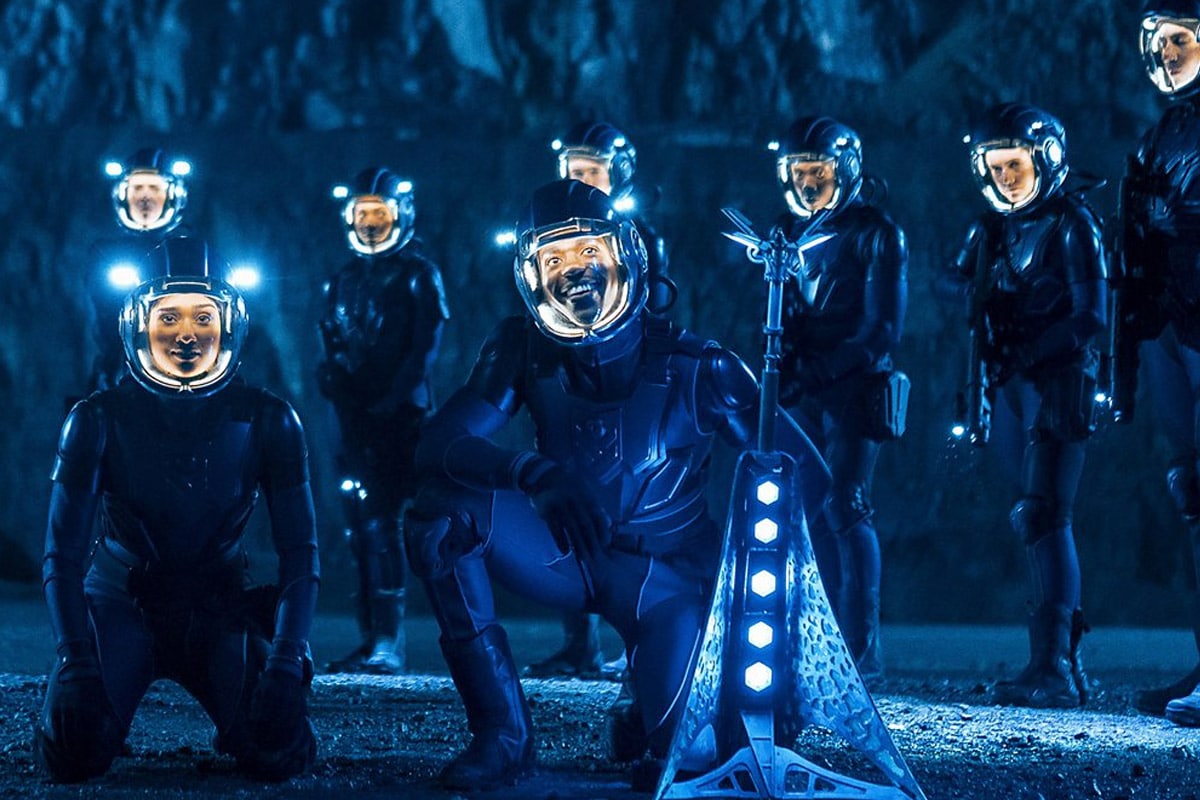Doctor Who | Series 15 | Episode: 2 | ‘Lux’ | Duration: 44 minutes | Writer: Russell T. Davies | Director: Amanda Brotchie | Starring: Ncuti Gatwa, Varada Sethu, Linus Roache, Alan Cumming
In Miami, 1952, 15 popcorn-popping viewers watch the cartoon character Mr. Ring-a-Ding come alive and step out of a picture house cinema screen. By the time the Doctor and Belinda arrive outside the cinema, it’s chained up, all occupants having disappeared bar the old projectionist who stays inside playing movies through the night. How can the TARDIS crew ignore a haunted cinema? But inside lurks an ancient and familiar power that challenges everything the Doctor and Belinda know about reality. What does Mr. Ring-a-Ding-Man want, and why should they not make him laugh?
“We’re going 3d.”
‘Lux’ continues Series 15’s strong start with a confident format-breaking story that has a lot to say about grief, belief and Doctor Who itself. Get ready to cry at yourself, fans.
‘Lux’ picks up directly from ‘The Robot Revolution,’ with the Doctor and Belinda in the TARDIS control room desperately trying to find a way back to Earth. Of course, there’s time for a stop, and (a couple more are signalled in a rarely awkward scene involving the Vortex Indicator).
That’s not to say it sells out on Belinda’s urge to get home, or the themes of control that emerged at the climax of the season opener. In ‘Lux,’ these expand to what looks like the season’s central theme. The idea of ‘control’ broadens out to consider narrative, destiny and in a gleefully controversial glimpse at Doctor Who itself. What if the Doctor and Belinda were fictional inventions in a TV show?
The stories arising from the Pantheon of Discord, unleashed during the 60th anniversary specials, have been a mixed bag. Yes, Ring-a-Ding is another pesky god, picking up the second episode slot from Maestro in Series 14, and serving up a sequel of sorts to ‘The Giggle.’ It’s inarguably stronger than both. The build-up, central concept and realisation are far more confident.
‘Lux’ finds writer and showrunner RTD in glorious form, roasting the format and turning the fun on the show itself. It feels a lot like the work of someone who’s had this idea on their mind for some time. But it’s not all about indulgence. Like the season opener before it, there’s a strong idea at its core, and it’s well realised on screen.
Oh yes, RTD has some digs at branches of fandom (“RIP Doctor Who”), massive love for others (“remember us”), and the resolution requiring the mass trashing of film canisters will give any fan the heebie-jeebies. But in a story bookended by atomic power, RTD weaves a glorious through-line on the nature of light. While last week put time travel under the cosh, this week it’s the Doctor’s regenerative ability – a trope of light in modern Doctor Who, and the alpha and omega for Lux, the God of Light.
There’s an appealing metaphysicality to the major storyline, but it works so well because of the scenes that ground it in reality. There’s the mother who’s lost her son in the picture house, and the projectionist given a spectacular chance to recapture the love he lost in a horribly mundane way. Crucially, the episode doesn’t shy away from the segregation of 1952 Florida. Without conflict or confrontation, the scene where the Doctor explains this to Belinda provides the episode’s strongest moment. The Fifteenth Doctor may be defined by the beautiful “I live it and I shine” line – a sentiment rarely explained better. It’s a fine moment to sit and relish that, for the first time, the leads of the show are people of colour.
Those moments help ensure that less worldly issues, particularly the meta elements that see the Doctor and Belinda are dragged through reality traps, don’t collapse in smugness. But those are also superbly written, verging from comedy to pathos in two heartbeats. It’s impressive how much emotion RTD manages to wring from the short scenes spent in Lux’s fiction trap in the episode’s most audacious moment (that we won’t spoil here). The Doctor sheds an obligatory tear, but so might the audience while gripping their sonic screwdrivers back home.
With the developing themes of narrative and control (who IS the Doctor saying ‘cut’ to?), it’s unlikely that we’ve seen the last of this idea. Especially when Miss Flood makes her obligatory appearance at the end, notably turning the dematerialisation of the TARDIS into a show. A mild criticism is that this feels acutely shoehorned, not helped by an abrupt cut to credits so soon after the poetic journey of the episode’s light has played out.
A final word on the God of Light, the villain of the piece, captured as a 50s cartoon character. After the sinister but laughable threat of the week before, Mr. Ring-a-Ding is a menacing and memorable foe, presenting in an out-of-the-world and meta way that tops Maestro or the Toymaker. When he swells to three dimensions at the end, it’s telling that he unexpectedly manifests as a grotesque, Robert Crumb-style horror. Early concerns that ‘Lux’ would be Scooby-Doo by numbers are quickly brushed away, despite a couple of jokes about the Mystery Machine outfit that land well. Despite the Doctor’s hit record against the Pantheon, which Lux helpfully lists, this is a threat that pulls out a new edge in the Fifteenth Doctor in his second year. Readying for the final confrontation, having just returned to reality, Gatwa’s steely delivery is something to behold.
History, self-analysis, horror… When it throws a lot at the cinema screen and a lot of it sticks, Doctor Who is still pretty much unbeatable.
‘Lux’ VERDICT
The strong season continues with an episode that’s not afraid to get meta. It’s thrilling to see the Doctor and Belinda walk up to the screen and step out of our TV! Yes, it’s slightly self-obsessed, and its ending is too abrupt. But it’s a gloriously confident concept-expanding Doctor Who that sets a terrifyingly intimidating high bar for whatever story takes the second episode spot next season.









0 Comments